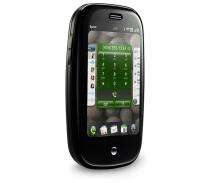Palm losing pace with Pre Plus

When Palm launched the Pre smartphone last June, I considered it a close second to the iPhone in the race for best smartphone on the market.
The smartphone market has changed a lot since then. Unfortunately, Palm hasn't kept pace.
Last week -- at long last -- Verizon began selling Palm phones running its new webOS operating system. The move to Verizon addresses what many analysts have seen as the biggest problem with the Pre and its sister phone, the Pixi: the carrier that was offering them. Sprint, the carrier that exclusively carried both phones up until now, is far less popular than Verizon and has tended to have poorer coverage.
Palm has also updated its phones and software. Last month, the company announced that the Verizon version of the Pre, dubbed the Palm Pre Plus, would have 16 gigabytes of flash memory -- double that of its Sprint-based predecessor. And the company showed off some new features for webOS, such as the ability to record videos and to play three-dimensional games.
There's a lot to like about the Pre Plus and its underlying webOS. The new 3-D graphics capability is a great addition. One of the most popular uses of Apple's iPhone and iPod touch devices has been playing games. With webOS's new capabilities, developers can now create games for the Pre that are as graphically compelling as those on the iPhone. I played Electronic Arts' "Need for Speed Underground" on the phone and was impressed.
The additional memory is also a nice change, allowing you to store more music, games and movies on the phone.
Palm promises to soon offer two more welcome updates for the Pre Plus. One will allow it to record video. The other will be a version of Adobe's Flash software written for webOS. The software should allow users to tap into a large selection of multimedia content, including games and videos, that are inaccessible without Flash.
Even without those updates, webOS is already an elegant and fun-to-use operating system. Its use of the "card" metaphor for open applications remains the best way I've seen on a phone to help users open, switch between and close programs that are running at the same time. But it has other strengths, too, such as support for a wide array of gesture commands and a notification system that's less obtrusive than the iPhone's and less clunky than that in Google's rival Android operating system.
Unfortunately, the Pre Plus in the end doesn't do justice to the potential and capabilities of Palm's webOS.
For one thing, the phone is slow. Really slow. There's a very noticeable lag -- sometimes as much as several seconds -- when you try to launch programs or switch between them.
Another big problem with it is that Palm is wedded to the idea that users want a physical keyboard. But it's become clear that touch-screen devices -- even those with physical keyboards -- need to offer users the option of a virtual keyboard.
When you are surfing the Web, it's natural to turn the phone on its side so you can get a wider view of pages. But with the Pre Plus in this position, there's no way to type in a new Web address or to enter keywords in a search box or to fill in an online form. Instead, you have to rotate the device so that it's right-side up and use its physical keyboard. That's annoying and time-consuming, and it interrupts the Web experience.
Even worse, the keyboard on the Pre Plus is dinky. Unlike most smartphone keyboards, the one on the Pre Plus slides out vertically, not horizontally, making it even more cramped and hard to type on. It also can make the device feel unwieldy as you type.
In another drawback, as well-integrated as the Pre Plus is with the Web, it's not so well tied to PCs, where consumers typically store their music and videos. Palm is no longer allowed to connect its devices to Apple's iTunes program, so getting media on to the phone from a PC can be difficult, involving finding and then dragging and dropping files and folders.
Finally, competitors are starting to catch up with some of webOS's innovations. The Synergy feature that integrates data from online sources such as Exchange mail servers and Facebook accounts was unique when Palm debuted it last year. But Motorola's Motorblur service, which is available on its Android-powered Cliq smartphone, is very similar and arguably takes the idea a step or two beyond what is possible with Synergy. Meanwhile, even the iPhone -- with applications such as Facebook and Orbit -- can do similar things.
Don't get me wrong. The Pre Plus is a nice phone, and I still love webOS. But there are better options out there.
(c) 2010, San Jose Mercury News (San Jose, Calif.).
Distributed by McClatchy-Tribune Information Services.




















